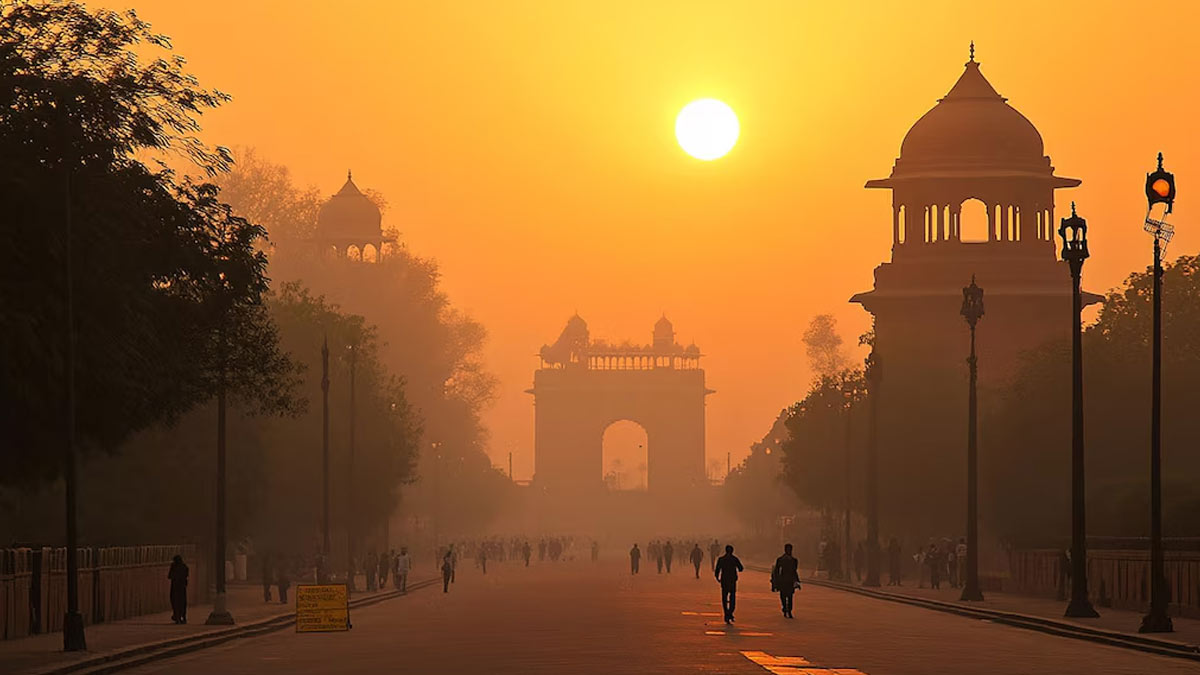
Ahead of Diwali, Delhi’s air quality continues to remain in the “very poor” category, leading to a spike in severe respiratory illnesses, especially among vulnerable populations. Those with preexisting lung diseases, such as asthma or bronchitis, are finding it increasingly difficult to manage their conditions, with daily activities becoming a challenge.
Table of Content:-
In light of the deteriorating air quality and increased pollution levels, we at OnlyMyHealth will try to decode India's colour-coded air quality alerts, which serve as crucial indicators of pollution levels and their associated health risks.
What Is The Air Quality Index (AQI)?![]()
The Air Quality Index (AQI) is a tool that helps measure air quality and provide information about the health effects of air pollutants. It is divided into six categories, ranging from 'good' to 'severe,' indicating how polluted the air is and the possible health effects on different segments of the population.
Also Read: Delhi Air Quality 'Severe': How To Protect Your Lungs From Chronic Damage
Understanding India's Colour-Coded Alerts For Air Pollution
.jpg)
Image design: Karan Sharma
As discussed, India's air quality alerts are divided into six colour-coded categories, ranging from good to severe. Here's a breakdown of each alert:
Good (0-50)
The air is considered clean and poses little to no health risk to the general population.
Satisfactory (51-100)
Air quality at this level indicates minor breathing discomfort, but mainly for vulnerable groups such as the elderly, children, or those with pre-existing respiratory conditions.
Moderate (101-200)
AQI levels in this range suggest that people with lung diseases, such as asthma or chronic bronchitis, may experience breathing or other health-related discomfort.
Poor (201-300)
Both healthy individuals and vulnerable groups may start experiencing breathing discomfort in this range.
Very Poor (301-400)
When the AQI reaches this level, even healthy individuals may develop respiratory illnesses after prolonged exposure. Vulnerable populations are at significant risk of severe respiratory symptoms, even after short exposure.
Severe (401-500)
It indicates extremely hazardous air quality. Prolonged exposure can cause respiratory illness in healthy individuals. For vulnerable groups, even short-term exposure can lead to serious respiratory issues, requiring immediate medical assistance.
Long-Term Health Risks Associated With Poor Air Quality

According to the World Health Organization (WHO), air pollution is a risk for all-cause mortality as well as specific diseases, which include stroke, ischaemic heart disease, chronic obstructive pulmonary disease, lung cancer, pneumonia, and cataracts (household air pollution only).
Research suggests that air pollution, especially Particulate Matter (PM), is harmful to heart health. PM, also known as particle pollution, is a blend of solid particles and liquid droplets in the air, which can be hazardous. It can cause problems like high blood pressure, an irregular heartbeat, and even heart attacks and strokes.
Other air pollutants include carbon monoxide (CO), ozone (O3), nitrogen dioxide (NO2), and sulphur dioxide (SO2).
It is also shocking to know that nearly half of lung cancer cases in people who have never smoked are estimated to be related to air pollution.
Also Read: Expert Talk: Impact Of Air Pollution On Lungs
How To Protect Yourself![]()
There are various ways to protect yourself from air pollution. Some of the measures include:
- Wearing masks
- Using air purifiers
- Limiting outdoor activities during high pollution days
- Eating healthy foods rich in vitamins E and C
- Avoid exercising outdoors.
Since it is Diwali, it is advised to avoid burning crackers, as these can contribute to deteriorating air quality. Use less energy in your home. Check daily air pollution forecasts in your area. And try going green whenever you can.
Also watch this video
How we keep this article up to date:
We work with experts and keep a close eye on the latest in health and wellness. Whenever there is a new research or helpful information, we update our articles with accurate and useful advice.
Current Version

